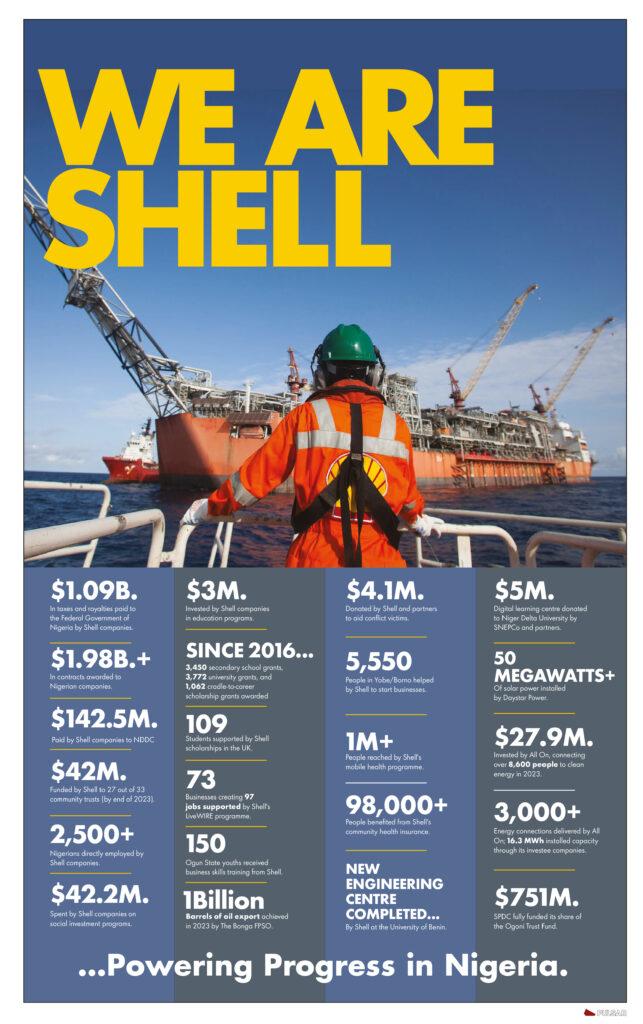Aviation
Airlines consider palm oil jet fuel after first commercial flight

Airlines consider palm oil jet fuel after first commercial flight
Airlines globally are considering oil-blended fuel as an alternative to Jet A1, whose cost has risen astronomically .
This is coming after Indonesia on Friday flew its first commercial flight using palm oil-blended jet fuel.
Indonesia is the world’s biggest producer of the commodity.
The country is pushing for wider use of biofuels to cut fuel imports.
Operated by flag carrier Garuda Indonesia, the Boeing 737-800NG aircraft carried more than 100 passengers from the capital Jakarta to Surakarta city about 550 kilometres (342 miles) away, Garuda Indonesia CEO Irfan Setiaputra said.
“We will discuss further with Pertamina, Energy Ministry and other parties to ensure this fuel is commercially reasonable,” Irfan said during a ceremony.
He added the plane was set to return to Jakarta later on Friday.
Garuda conducted several tests including a flight test on the new fuel earlier this month and an engine ground test in August.
According to Reuters, the palm-oil blended jet fuel is produced by Indonesian state energy firm PT Pertamina at its Cilacap refinery.
It uses hydro-processed esters and fatty acid (HEFA) technology and is made of refined bleached deodorized palm kernel oil.
Benefits of palm-oil jet fuel
Pertamina has said the palm-based fuel emits less atmosphere warming greenhouse gases compared with fossil fuels.
Palm oil producing countries have called for the edible oil to be included in feedstock for the production of sustainable aviation fuel (SAF), Reuters reports.
“In 2021, Pertamina successfully produced 2.0 SAF in its Cilacap unit using co-processing technology and was made of refined bleached deodorized palm kernel oil with production capacity 1,350 kilolitres per day,” said Alfian Nasution, a director at Pertamina.
A director at the Energy Ministry, Harris Yahya,s aid the use of biofuel would lower the greenhouse effect.
The aviation industry, a major emitter of greenhouse gases, is looking for ways to cut its carbon footprint by using alternative fuels.
Experts say the industry will need 450 billion litres of SAF a year by 2050, if the fuel is to account for around 65 per cent of the mitigation needed to achieve net-zero targets.
Aviation
Aviation workers threaten nationwide airports shutdown over Customs officer assault

Aviation workers threaten nationwide airports shutdown over Customs officer assault
Aviation unions have announced plans to shut down airports across Nigeria starting March 31 in protest against the failure to remove a customs officer who allegedly assaulted the Director of Aviation Security at the Federal Airports Authority of Nigeria (FAAN).
In a joint statement signed by Ocheme Aba (NUATE), Frances Akinjole (ATSSSAN), and Abdul Rasaq Saidu (ANAP), the unions condemned the repeated physical assaults on FAAN staff, vowing not to tolerate such incidents any longer.
The unions also called on the government to urgently reduce the number of customs officers operating within the aviation sector, aligning with global best practices. They warned that if their demands are not met, they will proceed with the nationwide shutdown, potentially disrupting air travel and operations.
The statement reads: “Considering the enormity and frequency of physical and psychological assault on the staff and management personnel of FAAN, of which there is no end in sight, we are compelled to inform the management of the unwavering determination of our unions to cause the establishment of a clear framework of mutual respect among FAAN staff and the security agencies operating at the airports.
READ ALSO:
- Over 100 suspects arrested in Abuja Ponzi Scheme Academy raid
- Again Obasanjo accuses federal lawmakers of bribery
- FG to pay corps members backlog of delayed N77,000 allowance
“Consequential sanctions are in place which guarantee the safety and human rights of FAAN staff. We shall direct all the workers to withdraw from the airports with effect from March 31, 2025, pending when such protocols are established.
“The recent assault on no less a personality than the Director of Aviation Security of FAAN is one too many, which leaves a taste too bitter to swallow. It is our sincere hope that our demand in the above respect is well met to avoid the industrial conflagration that will ensue in the absence of acceptable remedial actions.”
In response, Abdullahi Maiwada, the spokesperson for Customs, stated in a recent release that the disagreement between FAAN officials and officers of the Nigeria Customs Service (NCS) stemmed from a miscommunication over equipment movement and seating arrangements.
Aviation workers threaten nationwide airports shutdown over Customs officer assault
Aviation
Why FG stepped down merger of NCAA, NAMA – Keyamo

Why FG stepped down merger of NCAA, NAMA – Keyamo
In a significant policy shift, President Bola Tinubu has decided to halt the proposed merger of the Nigeria Civil Aviation Authority (NCAA) and the Nigerian Airspace Management Agency (NAMA), as recommended by the Steve Oronsaye report.
This announcement was made by the Minister of Aviation and Aerospace Development, Festus Keyamo.
Keyamo revealed that the aviation industry was also granted an exemption from the foreign travel ban imposed on federal government officials last year.
The ban, which took effect in April, was implemented to curb the escalating costs of travel expenses incurred by Ministries, Departments, and Agencies (MDAs) of the government.
The memo released last year stated: “Considering the current economic challenges and the need for responsible fiscal management, I am writing to communicate Mr Presideni’s directive to place a temporary ban on all publicly funded international trips for all federal government officials at all levels, for an initial period of three months from 1st April 2024.
“All government officials who intend to go on any publicly funded international trips must seek and obtain Presidential approval at least two weeks before embarking on any such trip, which must be deemed necessary”.
The Minister disclosed the reasons for the exemption in Abuja at the 25th anniversary celebration of the Nigeria Civil Aviation Authority (NCAA).
READ ALSO:
- Six family members killed in Kaduna accidental airstrike
- Mob lynches newlywed NDLEA officer in Kaduna
- At least nine dead in US floods and heavy rain
On the merger of NCAA and NAMA, he said: “From modest beginnings, we have witnessed remarkable transformations in our sector, ranging from enhanced supervisory measures and policies formulation, safety and security oversight, robust legislative and regulatory frameworks, advancements in air traffic management, development, expansion and certification of airports, accurate meteorological services, timely accident investigations, manpower development, and indeed, the growth of indigenous airlines.
“These achievements have not come without challenges. However, with the efforts of past administrations and the total support of the present administration under the dynamic leadership of His Excellency President Bola Tinubu through the Renewed Hope Agenda and the five focus areas of the ministry, we have overcome challenges and reached new heights.
“NCAA is a child of God, and despite turbulent waters and attempts sometimes to kill the NCAA, the NCA has survived 25 years. And I’m sure you know that any child that is born at the age of 25, of course, is undoubtedly an age of maturity.
“The Oronsanye reports also recommended the merger of NCAA and NAMA. And so that was also another attempt to kill the NCAA. That report was passed from Jonathan’s government to Buhari’s government, and then to the present government.
“It was one of the first items we considered in this government. So the Oronsanye reports came up that day, and the president went on and on, considered every item in the Oronsanye report, and asked the council to vote. And for each item, they would listen to the ministers and so the president came to the merger of NCAA and NAMA as one body.
“I raised my hand, I spoke for about five minutes and because we have a wonderful president who listens to good counsel and good arguments, after I finished speaking, he said, an item dropped, the merger of NCAA and NAMA would not remain”.
On the reasons for the exemption, he said: “It is a fact that the aviation sector remains a pillar of national development, facilitating trade, tourism, investment, and cultural exchange. Whilst it is yet to realize its true potential in terms of contribution to our nation’s Gross Domestic Product (GDP), we must renew our commitment to ensuring a more progressive, sustainable, inclusive, innovative, and prosperous aviation industry.
“This necessitates the continuous adoption and integration of emerging technologies, enhancing infrastructure, and investing in human capital development to keep our skies safer and secure and attain cohesive and efficient air transportation services.
“The President directed that foreign travels should stop, except in exceptional circumstances. Last year, there was a memo around March that said it was for three months, and the President, because of his desire to ensure that we are frugal in our spending; there was another memo again in December reiterating that memo last year we should cut down on foreign travels, except by direct presidential approval.
“But let us also give particular thanks to Mr. President, because despite that memo, since last year, he has made an exception for the aviation industry. I wrote a memo to him after that directive on behalf of the entire agency that says; Sir, we respect your directive; yes, we need to be frugal because the Nigerian people have also tightened their belts in the face of the economic reforms that are taking place. However, because of the safety of this sector, Sir, we need to make some exceptions for this sector. And the President graciously granted this for the aviation sector”.
Why FG stepped down merger of NCAA, NAMA – Keyamo
Aviation
Lagos govt, Summa Group sign MoU for Lekki airport construction

Lagos govt, Summa Group sign MoU for Lekki airport construction
An international construction company, Summa Group, has been assigned the task of developing the Lekki-Epe International Airport.
This came the Lagos State government signed a memorandum of understanding (MoU) with the construction firm.
Lagos State Governor, Babajide Sanwo-Olu, announced the agreement in a post on X on Saturday.
The governor described it as a major step toward enhancing connectivity, fostering economic growth, and attracting international investment to the state
“We signed a Memorandum of Understanding (MoU) with the internationally acclaimed construction company, Summa Group, to develop and construct the much awaited Lekki-Epe International Airport,” the post reads.
“This groundbreaking initiative is an essential part of our vision to improve connectivity in Lagos, stimulate economic growth, and draw in global investments.”
The governor said the airport would ease travel, and create new opportunities for residents and businesses across the state.
On October 7, 2022, the Lagos government announced plans to construct a new airport in the Lekki-Epe axis of the state.
Jubril Gawat, senior special assistant (SSA) to the governor on new media, said the project was expected to begin in 2023 and would be constructed on 3,500 hectares of land.
He said the master plan and aeronautical designs were in place, while studies were underway to determine strategies, funding, and other considerations, after which the project will be taken to the marketplace.
The airport, expected to cater to a minimum of five million people yearly, will be constructed in partnership with local and foreign investors.
Sanwo-Olu, on January 25, 2024, said the state was preparing for the project’s groundbreaking.
-

 metro2 days ago
metro2 days agoCourt refers Ojukwu property case to alternative dispute resolution
-

 Entertainment3 days ago
Entertainment3 days agoSome ladies in movie industry ready to sleep their way to fame — Jide Kosoko
-

 metro16 hours ago
metro16 hours agoAttack on Mufty of Ilorin: Onikijipa Family Charges Stakeholders to Call Sheikh Habibullahi Al-Ilory to Order
-

 Health22 hours ago
Health22 hours agoNigerian doctor pioneers W’Africa first robotic prostate cancer surgery
-

 metro3 days ago
metro3 days agoPresidency blasts Jonathan, Soyinka over comments on emergency rule in Rivers
-

 metro3 days ago
metro3 days agoAdeleke University didn’t suspend Muslims for praying – MSSN
-

 Politics3 days ago
Politics3 days agoAtiku, Obi, El-Rufai’s coalition can’t unseat Tinubu – Shekarau
-

 metro3 days ago
metro3 days agoDisregard court order against Rivers Administrator, says Fubara’s aide













